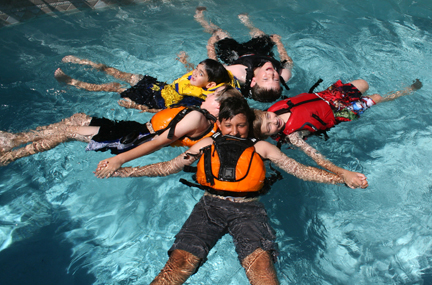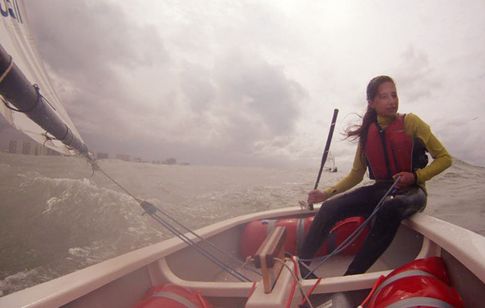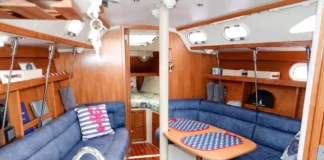After living in Florida for so many years, it is easy to forget the risks associated with colder waters, vividly demonstrated in a video on cold-water survival that I have included in this weeks blog post. According to the U.S. Coast Guard, the risk of drowning increases nearly five times if the water temperature is below 59 degrees. That puts many sailors in the Northeast, West Coast, and Great Lakes areas at serious risk for most, if not all of the year.

Former U.S. Coast Guard rescue swimmer Mario Vittone has an excellent blog article that explores some of reasons why cold water changes everything in a drowning situation. These are things that every boater should know, regardless of the boats sailing area. Another great resource is Cold Water Boot Camp, an award-winning website that promotes the research of Dr. Gordon Giesbrecht (Professor Popsicle), a professor of thermophysiology at the University of Manitoba in Winnipeg, Canada, where he runs the Laboratory for Exercise and Environmental Medicine, and studies human responses to exercise and work in extreme environments. The website and videos were developed to show the real-life effects of three phases of cold-water immersion: cold shock response, cold incapacitation, and hypothermia.
For a graphic demonstration of what the human body goes through when it hits cold water, the National Association of State Boating Law Administrators has produced a 10-minute video (also above) of volunteers trying to survive in icy water during Dr. Giesbrechts Cold Water Boot Camp. The Canadian Safe Boating Council has recently followed up with a website, Beyond Cold Water Boot Camp, aimed at first responders and boating safety educators. This website investigates the causes of Circum-rescue Collapse, in which a victim dies suddenly shortly before, during, or after the rescue. One of the key findings of this study was the importance of a gentle recovery and keeping the victim in the horizontal position. The discussion of victim extraction and care apply to victims in warm water as well; I would encourage all skippers to take a few minutes to visit this website.
The first phase of immersion in cold water is called the cold shock response. It is an involuntary physiological response to cold water. This response can last from less than a half-minute to a couple minutes. Some people are more vulnerable than others, and some people are able to condition themselves to avoid this response. It can be so severe as to cause cardiac arrest and death almost immediately.
The second stage is cold incapacitation, which is just like it sounds. The water temperature prevents you from being able to swim, wave for help, grab a throw ring, etc. Even before your body temperature begins to drop, the veins in your arms and legs constrict, making it difficult and then impossible to keep swimming. Even the best swimmer will begin to drown in less than 30 minutes.
The third phase of cold water immersion is hypothermia, in which the core body temperature drops below 95-degrees. Uncontrollable shivering and mental confusion set in, then comes unconsciousness and organ failure. With flotation a person can remain conscious up to an hour in 40-degree water; survival times can be as long as three hours. Survival will, of course depends on flotation.
Bottom line: Wear a personal flotation device.








































